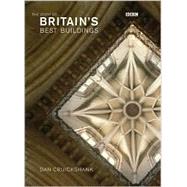
Dan Cruickshank is an architectural historian and the author of London: the Art of Georgian Buildings and Life in the Georgian City. He appears regularly on the BBC television series House Detectives, and he has contributed to BBC2's One Foot in the Past.
| Introduction | |
| Durham Cathedral | |
| Windsor Castle | |
| Holyrood house | |
| Blenheim Palace | |
| Cardiff Castle | |
| The Midland Grand Hotel | |
| St Pancras Tower | |
| Bridge Highpoint One | |
| Acknowledgements and Notes | |
| Glossary | |
| Bibliography | |
| Index | |
| Table of Contents provided by Publisher. All Rights Reserved. |
The New copy of this book will include any supplemental materials advertised. Please check the title of the book to determine if it should include any access cards, study guides, lab manuals, CDs, etc.
The Used, Rental and eBook copies of this book are not guaranteed to include any supplemental materials. Typically, only the book itself is included. This is true even if the title states it includes any access cards, study guides, lab manuals, CDs, etc.